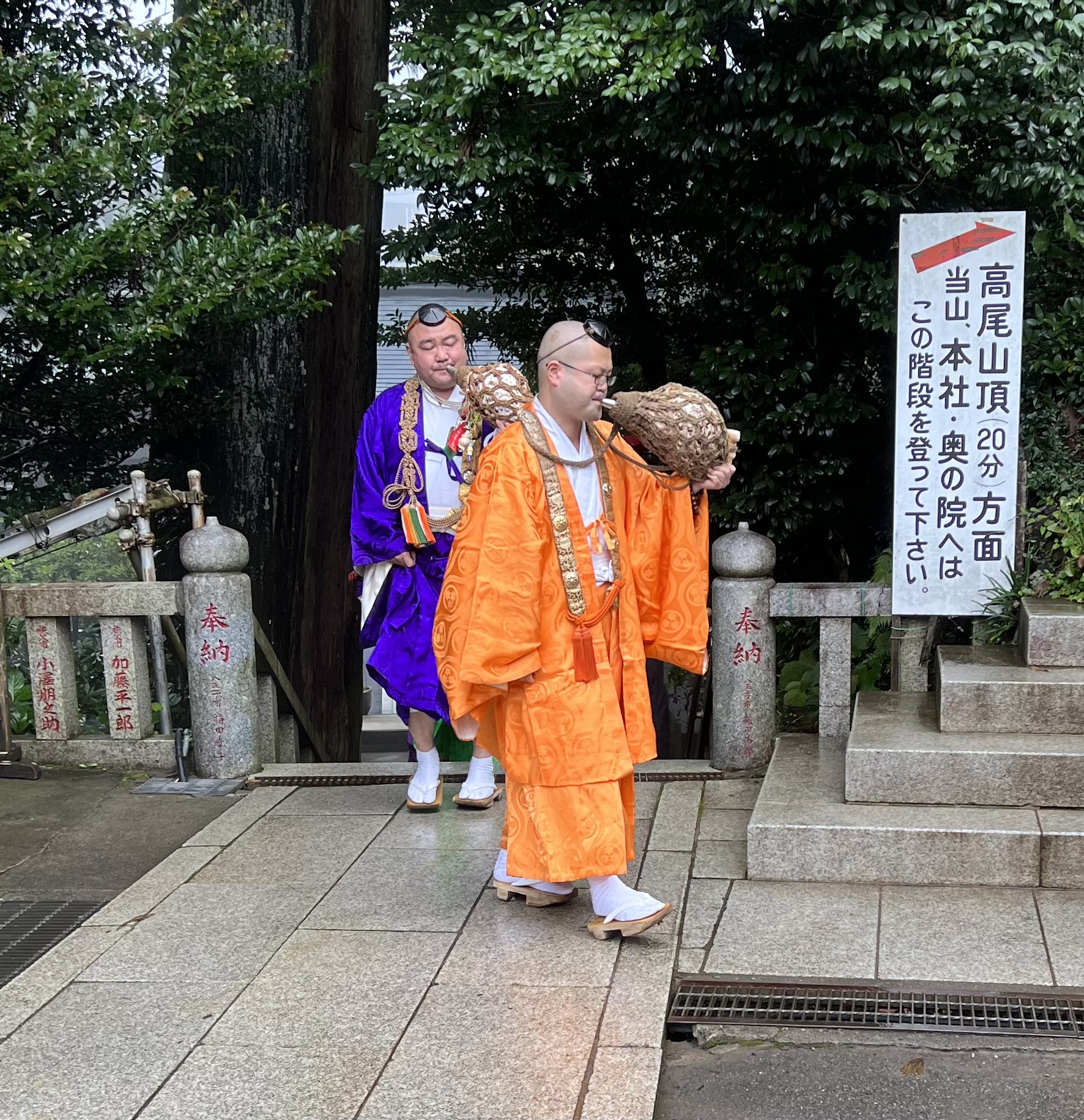For some reasons, there are two (2) main hall like structures in the precincts of Yakuo-in Temple at Mt. Takao.
One is the Izuna Gongen-do Hall having a Shinto shrine like appearance except for the incense burner installed in front of the building which is typical of a Buddhist temple.
The construction of this building is considered to have been completed in 1805 in the current architectural style called Gongen Zukuri with a semi-gabled copper roof.
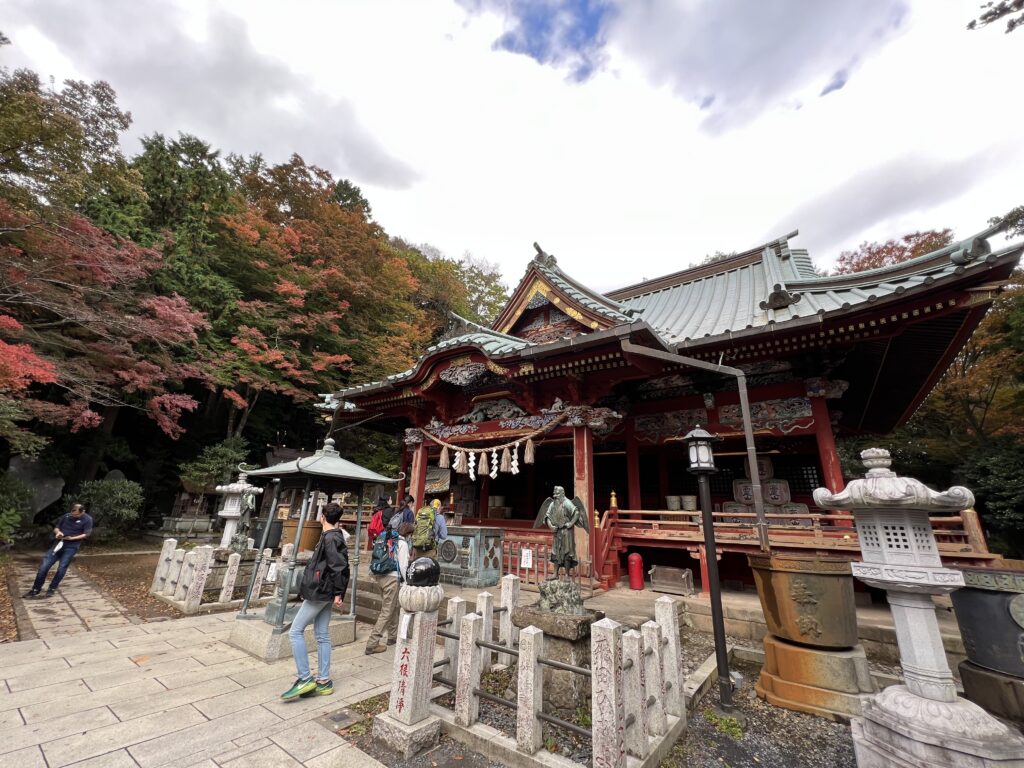
The architectural style of Izuna Gongen-do Hall is the same as Nikko Tosho-gu Shrine, which forms a part of Shrines and Temples of Nikkko UNESCO World Heritage Site together with Futarasan Shrine and Rinno-ji Temple (https://whc.unesco.org/en/list/913/).
In this architectural style, (i) a worship hall where we pray, (ii) a votive offering hall where we make offerings, and (iii) a main hall where a divine object, in which a spirit of the Shinto deity is supposed to reside, is kept are all combined.
This is where the syncretic deity called Izuna Daigongen is enshrined.
In front of the Izuna Gongen-do Hall, there is a Shinto style gate called Tori-i.
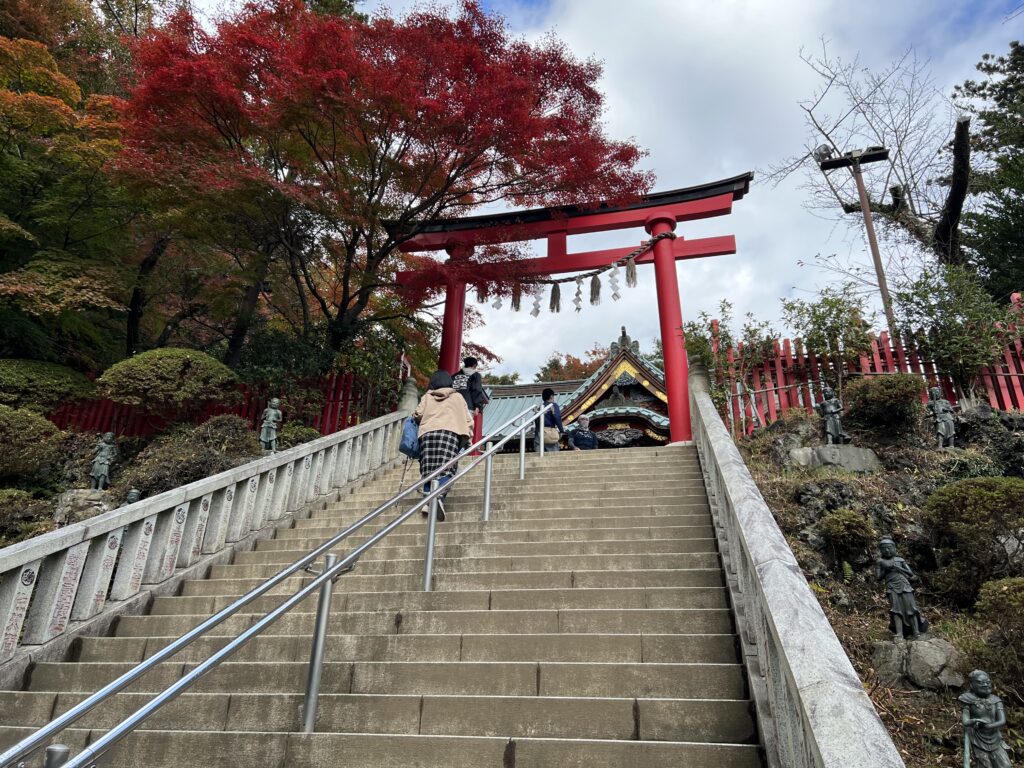
The other is the Main Hall of Yakuo-in Temple having a Buddhist temple like appearance except that it is decorated with a twisted rice straw rope with strips of cut and folded white paper called Shimenawa which is typical of a Shinto shrine.

This building was constructed more recently in 1901 having an architectural style with a semi-gabled copper roof.
This is where both (i) Yakushi Nyorai or Healing Buddha (Bhaisajyaguru in Sanskrit) and (ii) Izuna Daigongen are ”said to be” enshrined.
In fact, nobody is allowed to see the statue of Healing Buddha there, as it is “officially” treated as the “hidden Buddha” the existence of which I personally doubt.
In front of the Main Hall of Yakuo-in Temple, there is a Buddhist style gate called Nio-mon with a hipped copper roof.
Nio-mon literally means a gate of two (2) Heavenly Kings where two (2) guardian deities of Indian origin protect the temple.
This Buddhist style gate is said to have been constructed sometime in the first half of the Edo period (i.e. the period lasting from the early 17th century until the late 19th century) during which the Tokugawa shogunate ruled Japan.
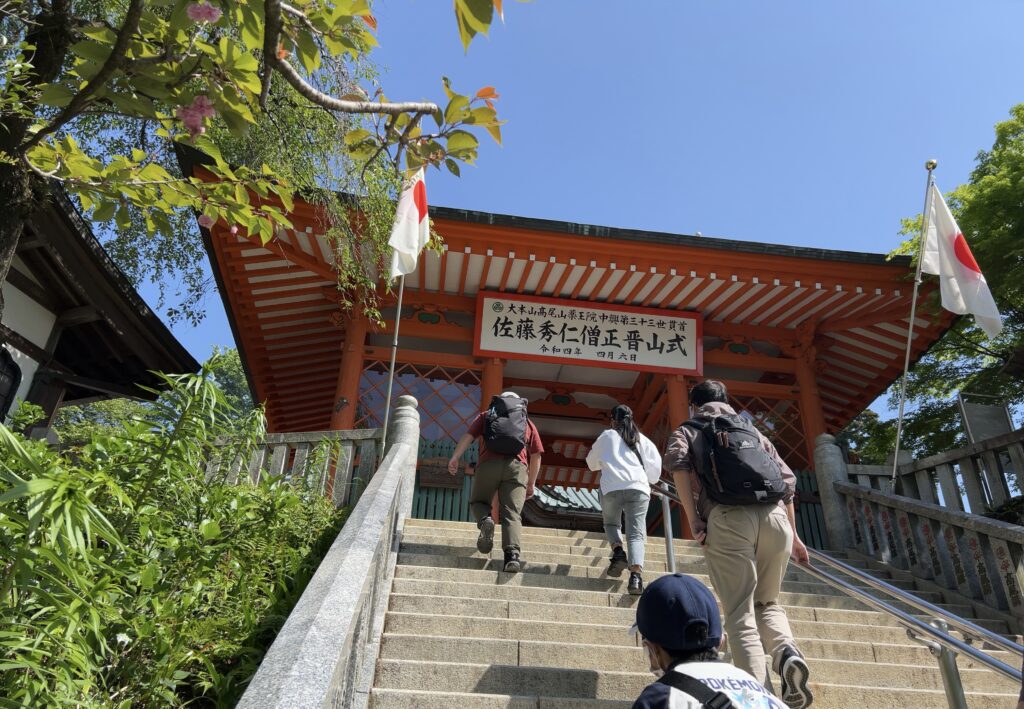
Generally, I would explain to foreign tourists (i) that if they should see a Tori-i gate, a pair of stone carved guardian dogs (or lions) called Komainu (literally, Korean dogs), a rice straw rope called Shimenawa, a purification basin called chozu-ya or temizu-ya, Japanese sake (rice wine) barrels as offerings, etc., they should be in the grounds of a Shinto shrine and (ii) that if they should see a Buddhist style gate such as Nio-mon and Shitenno-mon, Buddhist statues, incense burners, Shoro-belfry, etc. they should be in the grounds of a Buddhist temple.
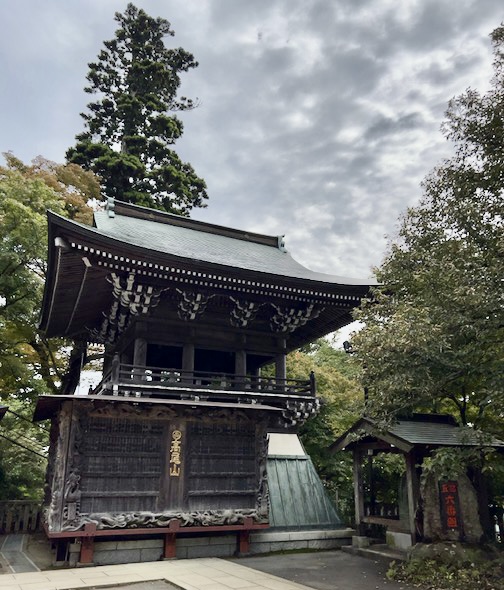
Having said that, you can see all of them in the grounds of Yakuo-in Temple, which might be a little too confusing to visitors from overseas and even to some of the Japanese visitors to Mr. Takao.
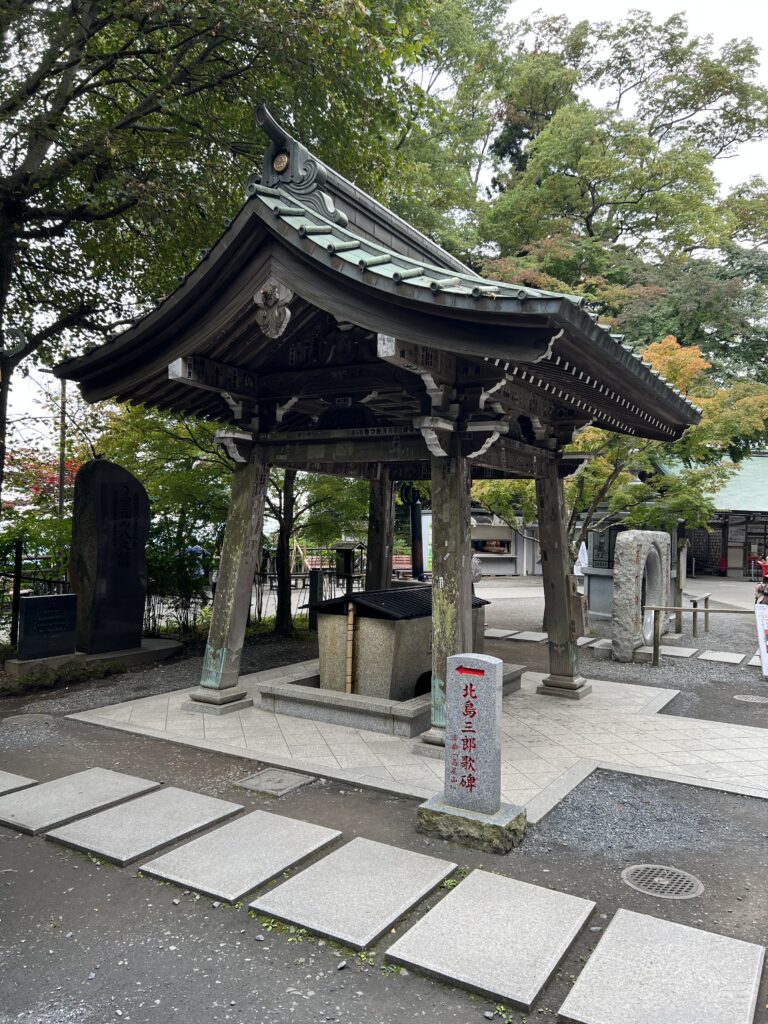
It should be noted, however, that the fusion of Shinto and Buddhism was more or less a part of the traditional cultural landscape that Japanese people had got used to seeing before the Meiji Restoration.
The Meiji Restoration refers to the political change that the last shogun Tokugawa Yoshinobu returned his power over to the emperor in 1867, and in the following year a new government was formed with Emperor Meiji at its head.
The Meiji Restoration had to happen for Japan to cope with the threat of being colonized by the Western powers represented by Great Britain, France, USA, Russian Empire, etc. with which the Tokugawa shogunate had been forced to conclude unequal treaties under which Japan had to give up custom autonomy and grant extraterritorial right to the Western powers.
The Meiji Restoration led to the enormous changes in the Japan’s political, economic, social and educational systems which also had some significant impact on its old social conventions including religions and even eating habits.
Back in 744, Yakuo-in Temple was established by order of the 45th Emperor Shomu as a base for Buddhism in eastern Japan.
It is said that the founding priest of Yakuo-in Temple was Gyoki, more commonly known as Gyoki Bosatsu (or Gyoki Bodhisattva), a charismatic Buddhist priest who is also well known for his contribution to the construction of the statue of Great Buddha at Todai-ji Temple in Nara which forms a part of Historic Monuments of Ancient Nara UNESCO World Heritage Site (https://whc.unesco.org/en/list/870/).
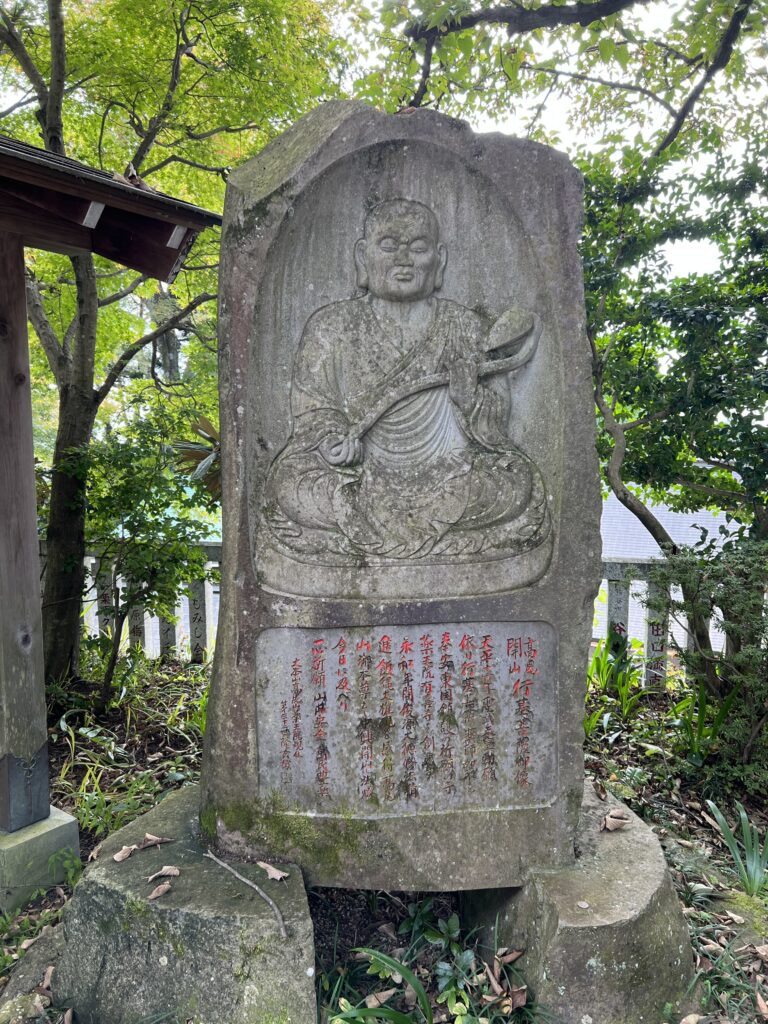
Originally, the principal object of worship at Yakuo-in Temple was the statue of Healing Buddha who can heal the sick featuring a medicine vase on his left hand.
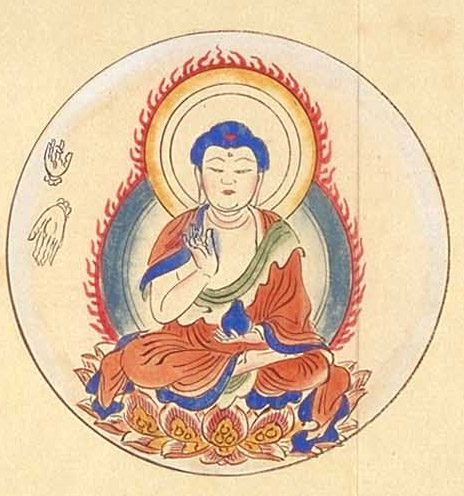
The name of Yakuo-in Temple, literally, the temple of medicine king comes from the fact that the original principal object of worship was Healing Buddha.
In the late 14th century, once devastated Yakuo-in Temple was restored by Shungen Daitoku, a priest of Daigo-ji Temple in Kyoto that was founded by Rigen Daishi Shobo, literally, Great Priest Shobo who is known as the founder of the Tozan School of Shugendo belonging to the Shingon sect line.
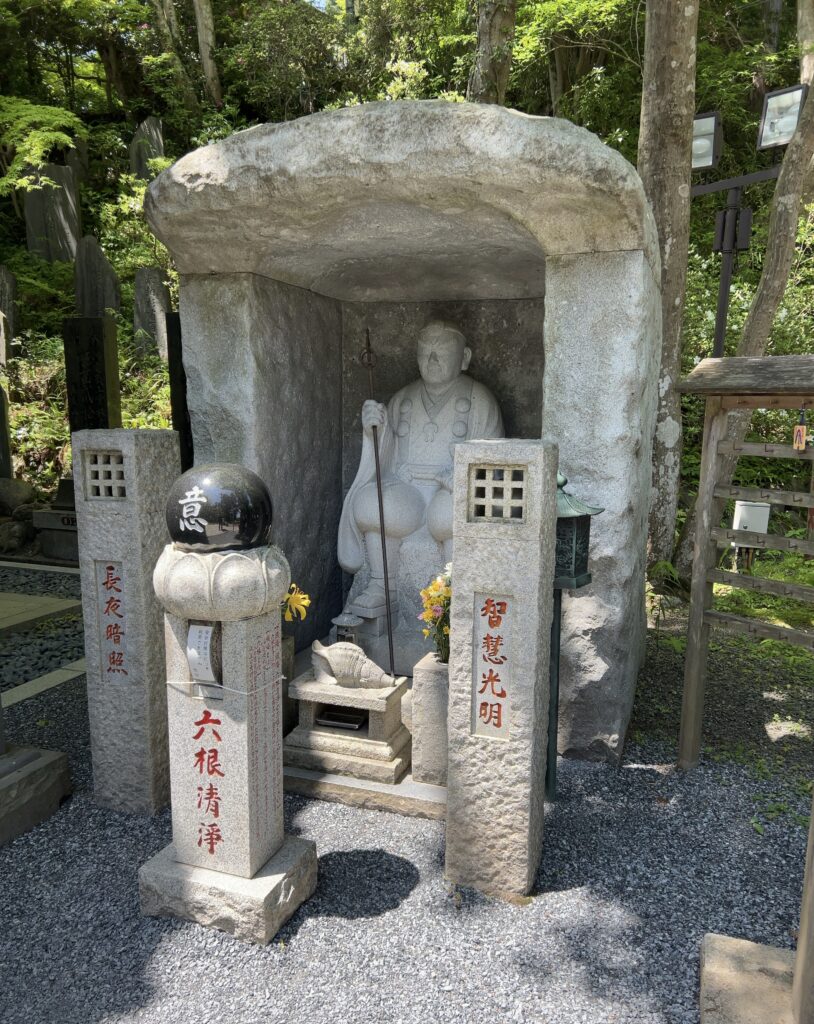
As you may know, Daigo-ji Temple forms a part of Historic Monuments of Ancient Kyoto UNESCO World Heritage Site (https://whc.unesco.org/en/list/688/) .

Author: 663highland
https://upload.wikimedia.org/wikipedia/commons/a/a8/Daigoji_Sanboin_Kyoto04n4592.jpg
When Yakuo-in Temple was restored by Shungen Daitoku, a syncretic deity called Izuna Daigongen which is associated with Shugendo was additionally enshrined as another principal object of worship.
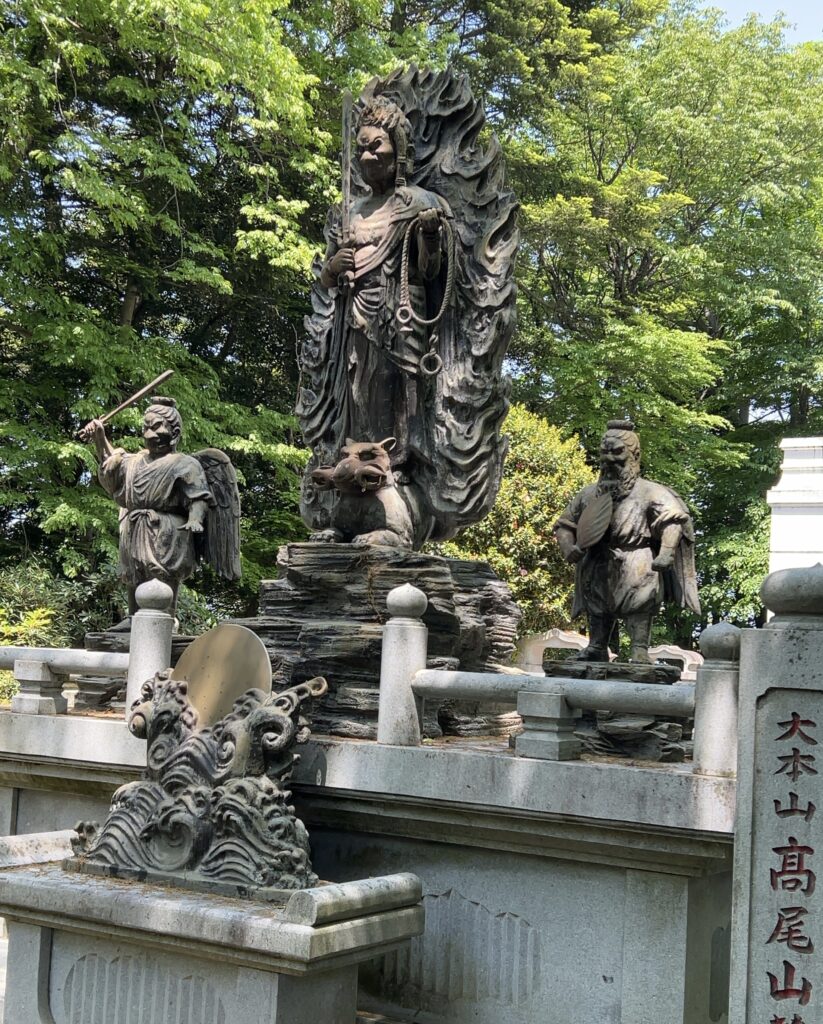
Shugendo is (i) the fusion of Buddhism and the Japanese mountain worship derived from Shinto, the indigenous religion of Japan based on nature worship and (ii) considered to have been fully established toward the end of Heian period (roughly the period from the end of 8th century until the end of 12th century) subject to the influence of some other religions such as Taoism (including the Principle of Yin and Yang) that is an ancient Chinese philosophy.
Shugengo is more closely associated with the Esoteric Buddhism such as Shingon and Tendai sects of Buddhism.
Actually, before the Meiji Restoration, Shugendo was classified as one of the Buddhist sects being divided into two (2) major groups: the Honzan School of Tendai sect line founded by Chisho Daishi Enchin and Tozan School of Shingon sect line founded by Rigen Daishi Shobo.
In this context, before the Meiji Restoration, Yakuo-in Temple belonged to the Tozan School of Shingon sect line.
This situation comes from the policy on religion adopted by the Tokugawa shogunate during the Edo period (1603 – 1867).
That is, in order to prevent the spread of Christianity and to force the believers to convert, the military government instituted the parishioner system (called Danka Seido) which forced the public to choose a certain Buddhist temple as their family temple and to register with the temple as supporters of the temple.
Accordingly, for the purposes of the parishioner system, Shugendo was expediently classified as one of the Buddhist sects.
Combined with the national isolation policy (called Sakoku) that was also adopted by the Tokugawa shogunate, the parishioner system appears to have worked nicely and effectively in order to discourage any attempt of potential colonization of Japan by European powers such as Spain and Portugal during the Age of Discovery, in which the Jesuits (the Society of Jesus) took the leadership in the religious aspect as was the case with other areas in the world such as Latin America.
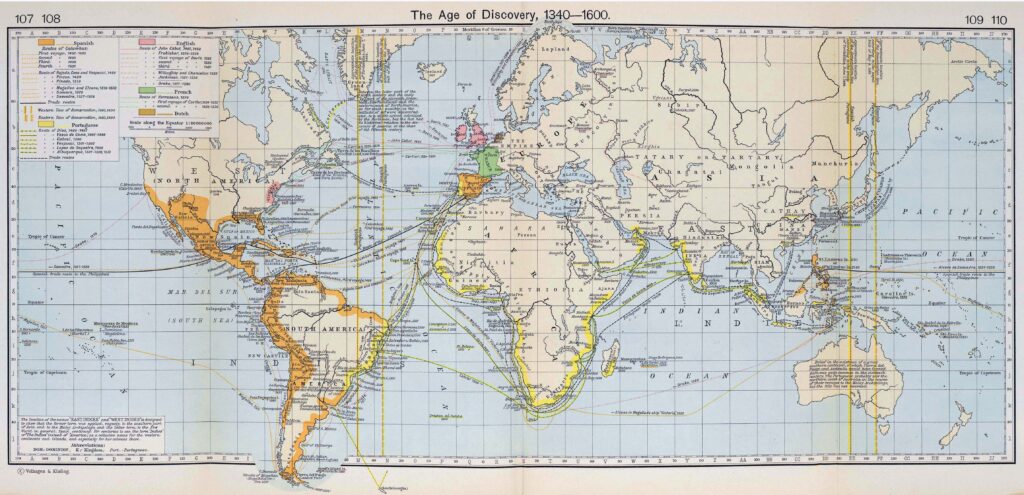
https://upload.wikimedia.org/wikipedia/commons/c/c3/World_1340_1600.jpg
Incidentally, the Age of Discovery sounds a very one-sided expression which appears to have come from just a European perspective.
This expression also reminds me of my experience in Ireland some 30 years ago.
That is, in my mid-thirties, I changed my jobs and joined an Irish company being stationed in Shannon, a small town in the western part of Ireland just for a short period of time.
At that time, some of my colleagues talked to me saying “You have come all the way from the Far East, haven’t you?”
On the very first occasion I simply responded saying “Yes, I have.”
On the following occasions, however, I responded jokingly, “I’m afraid that you are in the Far West from my perspective.”

In fact, during the Age of Discovery, both Spanish and Portuguese people were collectively called Nanbanjin, literally, southern barbarians in Japanese as they appeared to have come from the south of Japan.
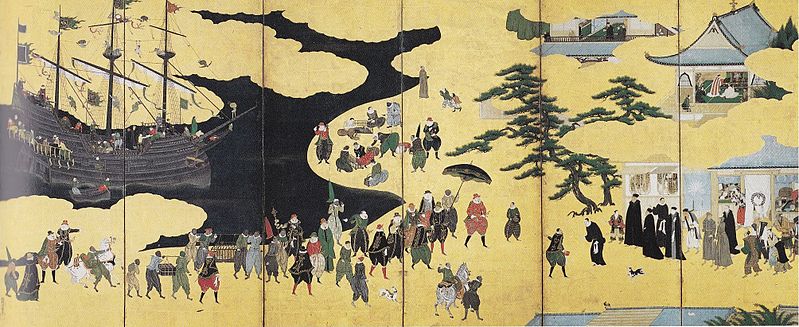
At the end of the civil war period (i.e. the early 17th century), the then Japanese military government was in a position to mobilize some 300,000 well trained soldiers equipped with fire arms that had already been introduced by Portuguese traders into Japan in the early 16th century.
With this background, any attempt of colonization of Japan by European powers at that time might have been a sort of mission impossible.
With the advent of the Meiji Restoration, the peace in the Japanese religious world was suddenly broken and Shugendo fell into a decline as a result of the issuance by the new Japanese government of a decree prohibiting Shugendo practice in 1872 that followed the Edict for the Separation of Buddhism and Shinto making Shinto the national religion of Japan.
Fortunately, after the World War II, Shugendo made a full comeback under the current Constitution pursuant to which we are now guaranteed the freedom of religion.
In order to survive the period when Shugendo was on the decline, the management of Yakuo-in Temple decided to convert its religious sect from the Tozan School of Shugendo belonging to Shingon sect line to the Chizan School of the Shingon Sect with its head temple of Chishaku-in Temple in Higashiyama, Kyoto which is still “officially” effective as of today.
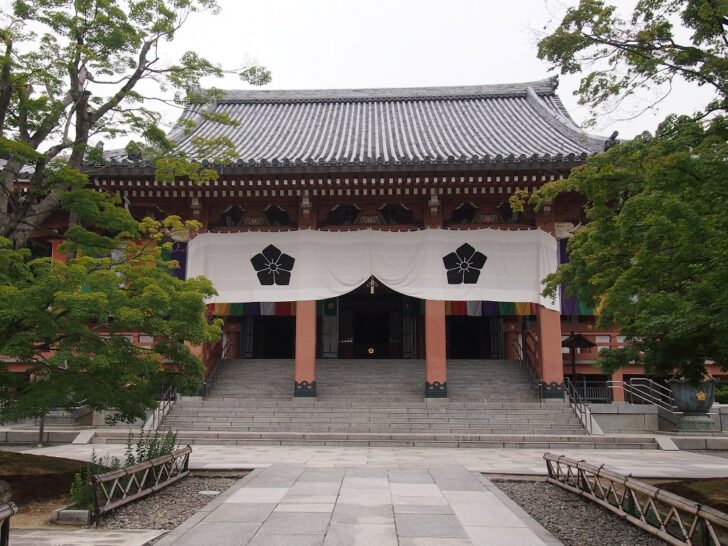
Further, in order to demonstrate that it had transformed itself into a pure Shingon Buddhist temple, they (i) changed the name of its principal object of worship to Izuna Fudo from Izuna Daigongen since the term of Daigongen which literally means Great Avatar refers to a god under the fusion of Buddhism and Shinto, (ii) demolished one of the Shinto style Tori-i gates at the foot of Mt. Takao which was the most noticeable one among the three (3) Tori-i gates mainly due to its location, (iii) constructed a new main hall of the Yakuo-in Temple, etc.
Eventually, they successfully deceived the eyes of the Japanese government, weathered the difficult times and have managed to maintain virtually all of its religious structures that mix elements of Shinto and Buddhism except that as a gesture of complying with the new regulations they took some actions as mentioned above.
The foregoing is the background of the strange situation that there are two (2) main hall like structures in the grounds of Yakuo-in Temple.
I would say that the essence of Japanese culture is fusion and one of the most important concepts in the Japanese culture is harmony.
You can see the very good examples of them at Mt. Takao.
I must admit, however, that fusion is not just unique to the Japanese religions.
I remember that in the novel titled Da Vinci Code written by Dan Brown, an American author, Robert Langdon, the main character of the story, says to the effect that virtually all the elements of the Catholic ritual were taken directly from earlier pagan “mystery religions”, Egyptian, Persian, etc.
Having said that, we could say that Shinto’s polytheistic nature allowed us more easily to accept foreign Buddhism which has long lived in harmony with Shinto.
Further, Shinto has something in common with Mahayana Buddhism that was introduced into Japan from India through China and Korea in the 6th century in which Shakyamuni Buddha is considered a divine being as opposed to Hinayana Buddhism that is prevalent mainly in Sri Lanka and Southeast Asian countries such as Thailand and Myanmar in which Shakyamuni Buddha is considered an ordinary human being.
That is, both Shinto and Mahayana Buddhism have the nature of pantheism which is the religious belief that a god is in everything in nature and the universe.
On the other hand, in Japan there are not many believers in any monotheistic religion such as Christianity or Islam.
Let me discuss the remarkably rich biodiversity of Mt. Takao next time.
